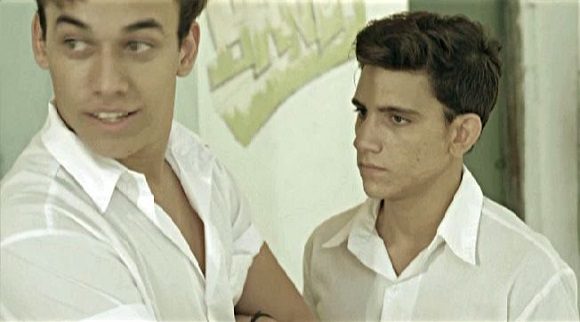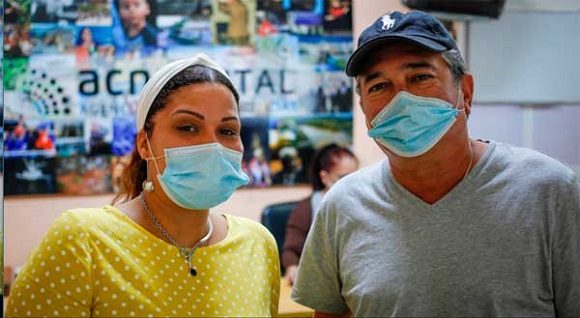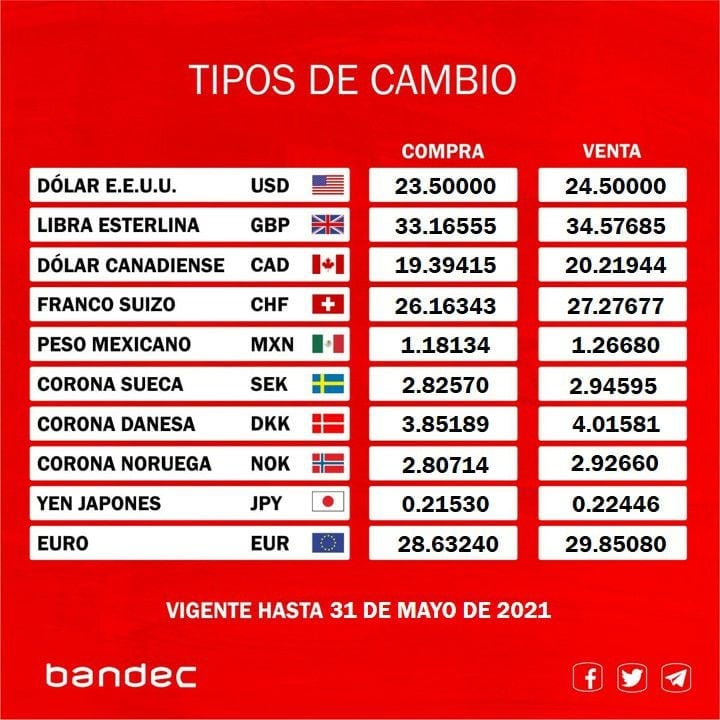
Two elderly Cubans dealing with the consequences of their own violence after serving as a refuge for a neighbor who was attacked by her partner. The long-term impacts of a teenage pregnancy caused by sexual assault. Another woman who, after suffering the most extreme violence, goes from victim to victimizer.
Week after week the stories fell: those and others, harsh, aggressive, without half measures. They showed the many faces of gender violence in a society still marked by prejudices and macho stereotypes. The second season of Breaking the Silence had many of us in front of the television for eleven Tuesdays. It scared us, it brought tears to our eyes, it showed us the most daily and most bloody violence, it caused us to disagree with one end or another, but above all it made us think, to debate..

The series has the indisputable merit of having put gender violence on the table, on social networks, in full view of all ... to criticize it and even more, to make it visible: to remove it from a silence that ultimately protects it. He succeeded because he did not show it as an isolated event, but as part of more complex cycles. In each chapter various manifestations and stereotypes were woven around a central story..
Almost no character was completely good or bad, few escaped the reproduction of at least one prejudice. Because the most dangerous thing about sexist violence is that it is not a fight of men against women, but of a patriarchal society against anyone who does not comply with its rules. That working principle, Breaking the Silence made it pretty clear.On the learning necessary to tell such complex stories, the difficulties for them to finally reach the screen, the challenges of mixing fiction with education, the value of showing the problems of the society in which we live and many other topics around the season just recently. Once finished, Cubadebate spoke with Legna Pérez Cruzata, one of its directors, and Mariela López Galano, one of its screenwriters.

How did you get to the Breaking the Silence project? Why a series on gender violence?Legna Pérez: “I came to Breaking the Silence from the first season, after Lucía Chiong and Chino Chiong worked on a film script on gender violence for the Film Festival. Lucía came up with a series on this topic and from there we began to work on the arguments between the three of us, with a bombardment of ideas between all of us. This is how the series was born. Later, Lucia developed it as a writer.“After the approval of the project, we started working with the Oscar Arnulfo Romero Center (OAR). There they gave us advice on these issues, for their approach not only from the script but also in the work with the actors. We go through an awareness process and from there, we project the management work.“That's how I came to the project and whenever the opportunity exists and television wants it, we must return to issues like this. Because they are still giving something to talk about, much remains to be said. Whenever I can, I will be willing to do it again. The audiovisual owes a lot to these themes of violence. It is a sensitive subject, where there are still many taboos and it is necessary to continue making visible ”.Mariela López: “Rolando Chiong and Legna Pérez were preparing the second season. Lucía Chiong - creator of the project and lead scriptwriter - could not write at that time. The time to prepare the series was that, for all the effort it takes to go into production.“El Chino trusted me: I had never written an original, only versions by other authors, it was a challenge to face a blank page. Then the process began: El Chino, Legna and I teamed up with Marisel Pestana, dramaturgical advisor, and Mareelén Díaz, specialist in gender issues.
“A series is the best way to understand and heal social problems, I have participated in several workshops on gender violence and nothing has a greater impact than an audiovisual. That is why the researchers insisted on approaching the subject from a fictional audiovisual.“Gender violence is rooted in the world, of which our society is a part. Now they are working on it in the new Penal Code and in the Family Code. The law is necessary because it regulates, but it is not enough: it is necessary to make visible, offer tools, demystify false beliefs, dismantle them and put them on the table ”.
Legna Pérez: “One of the main challenges of addressing these issues on television has to do with the fact that it reaches all of Cuba. In every house there is a television and these are matters that are still taboo in our society. Many times people do not know how to identify situations of violence, when they are violated or when they violate someone. There is still a lot to learn.“So, when we approach this problem in an audiovisual, we are in a kind of tightrope in front of that process of individual interpretation, which goes through different filters. We run the risk that people do not accept it, do not assimilate it, that they do not believe the existence of this violence. And it does happen a lot: we constantly live with her. Sometimes it is so naturalized that we do not realize it. The series is about opening people's eyes and educating.“During the preparation of the work we hardly had any obstacles. We brought an experience from the first season and we went to the insurance. We convened the OAR for the second time and they organized a workshop for all the writers. We went through all the approval and advice filters, it was very rigorous. We have a luxury consultancy and that led to more comfortable processes, without obstacles.“The transmission did last a little longer by decision of the television. They decided to broadcast the series at the time they saw fit. It took a year to get to the screen after the job was done. "
When addressing issues of this type in the audiovisual, the controversy arises as to whether they should have a more educational or more artistic nature, is it possible to combine both endeavors and succeed?Legna Pérez: “Combining the educational with the artistic is complicated because, in themselves, these issues are complex. When you have the purpose of transmitting a certain message, including the educational one, you must work well on each of the stories, outline them so as not to touch the teque. It is a very complex pairing to achieve, but of course it can be done ”.Mariela López: “Art is educational as long as it is art. Understanding it is the key. It must be understood that the fictional audiovisual is a reflection of reality, a dramaturgical construction based on verisimilitude. It is not the social or institutional mirror that some officials perceive when they read or watch an audiovisual work, they confuse "reality" with "verisimilitude". From the laws of dramaturgical construction "reality" is often implausible, that is why stories are built from verisimilitude, it seems real but it is not. Many times the reality, taken as it is, is absurd, insipid, devastating and uninteresting."Works of fiction are communication channels that promote social reflection from a positive approach, not implausible, and in this way it works as a reflection of a" constructed reality "from research that promotes reflection, then transformation occurs".Many viewers agree that the series has an uncommon audiovisual quality for Cuban television, even better than that of the first season. How is this result achieved? What distinguishes this season from the previous one?
Legna Pérez: “What distinguishes this season from the previous one is that we were much more prepared on gender issues. The first one strengthened us and now we had more clarity, objectivity, in the stories we wanted to tell.“Also, this season it was produced by RTV Comercial. The production scheme was a little more viable, comfortable, with more job guarantees. That affects the final packaging that the work had. Having produced it from RTV was an award for Rompiendo el Silencio ”.In a society where we still suffer the effects of machismo and its prejudices, the multiple debates in networks - for and against - that the series raised, as a creative team, what did you get from this feedback?Legna Pérez: “It was a challenge for the series to air during the pandemic. Virtually everyone is in the house and the level of acceptance was above what we expected. The rebound in the networks, in our private chats, was impressive. Ordinary people wrote to us to tell us about their experiences. The exchange with the public has been super nice.
"The feedback exceeded all our expectations. It was very gratifying that people understood and processed each of the chapters from different positions. And mostly from a positive way. That, I think, was the greatest achievement of the series."Mariela López: "The screenwriter goes through the entire process that the work tells from his mind to his heart, he goes through his body:" it's literal. " The work carries the soul of whoever creates it, in the audiovisual this is the first step, but then the director appropriates it and puts his life in it. This will inspire your stunts and actors who continue the cycle to the point where viewers don't see actors, but real people, as if observing life through a window.“Our art keeps us alive, nothing stays the same when you finish. Then, the public's response returns you unsuspected glances, it is an act of revelation that goes beyond the initial rigor to which we submit during the investigation and editing process ”.
As part of these debates, some people have commented that in certain chapters the endings were very open, that the characteristics of the acts of violence and what was wrong with them were not clear, what do you think about it?
Mariela López: “When an ending is perceived as open, two things happen: either dramaturgically the central story is poorly told, or the audience wants to know more. The open endings close the central story. From there begins another one that is yet to be written, perhaps it is the viewer's own task to transform it for his or her own life ”.Legna Pérez: “Stories don't always have a happy ending. They do not always have an ending. Sometimes the violence continues and other times it has a closure, a path. Sometimes the way is to keep looking for solutions to the problem you are experiencing. That's what the series was about as well: we presented a variety of stories, approaches, goals.“We know that in fiction people always hope for a happy ending, but it doesn't always happen. We try to balance that diversity to please different audiences ”.
In your opinion, why is it important to continue making these types of stories visible, which are definitely part of the Cuban reality?
Mariela López: “Counting it helps to heal is the title of a book of testimonies of women victims of gender violence, led by researcher Sara Más.“Sensitive subjects go through severe scrutiny, it takes years to dust them off. The first reaction is censorship, you try to work as a team with the institutions and veto the projects in development through closed-door opinions, full of rhetoric without mediating dialogue with the authors.
“It is happening to me right now with the scripts for the fiction series Hijos de las Nubes, which addresses the issue of child abandonment with a social focus on family responsibility and the work of homes for children without family protection in Cuba.“It takes work to cross bridges, open doors and break the silence to which we are subjected when it comes to sensitive issues. On the other hand, the people and the highest leadership of our country ask to put them on the table.“When audiovisual creators deal with social issues in works of fiction, we are not the enemy. If we work in collaboration from the essential perspective of what is important for the Homeland, which is to see it from the inside, with love, responsibility and credibility, we would take the first step to heal socially.
“Hiding our realities is not going to solve them; the people want to see them from an honest and constructive approach, they need tools for life. If not understood, we will continue to see problems from other latitudes on the screen. We will lose our historical memory. Audiovisual creators are communicators, we have a social commitment to our time and the generations that precede us ”.CUBADEBATE





Read more...